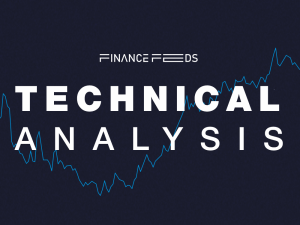Corvil and Pico’s new intelligent approach to MiFID II regulation: Interview with David Murray
“Regulatory technology is a growing component of the electronic trading industry and it is likely we will see it extend and grow within other financial services such as payments, wealth management, online banking and others. Further, automation and algorithmic business are no longer solely functions of the Financial Services industry either” – David Murray, Corvil

This week, multi-asset trading technology provider Pico entered a strategic partnership with Corvil in order to develop and launch a new trading platform for European markets, intending to reflect the European strategy and product development within the firm.
The purpose of the venture is to create a unified network that brings into effect Corvil’s technology whilst providing a series of European customers with highly refined business intelligence via a real time trading environment along with data feeds to assist in meeting regulatory obligations, in particular the forthcoming implementation of MiFID II.
Today, FinanceFeeds spoke to David Murray, Chief Business Development Officer at Corvil, in order to examine this very closely.
Compliance and the automation of regulatory reporting has become an area of great investment by specialist companies lately. With compliance consultants in high demand in London, those with knowledge of how the system works charging £1200 per day, do you envisage that partnerships such as this one between Pico and Corvil automating the entire procedure and cutting the human resource cost?
What this relationship demonstrates more than anything is the growing need for transparency, controls, and business intelligence to provide customers with differentiated services and to enable them to improve the effectiveness of their trading strategies.
Compliance and regulatory reporting are integral parts of nearly any Financial Services offering nowadays. With an increasingly dynamic European regulatory landscape and high costs and overhead for compliance, automated reporting processes are an imperative to help companies keep pace in the market.
Technologies such as Corvil help to decrease human resource costs for compliance across an organization so that executives can devote more resources to other key areas of their business.
The first regulatory authority to employ surveillance to ensure real time monitoring of the activities of FX firms was ASIC in Australia when it brought in the First Derivatives Delta Suite system. This was three years ago and it has proven very effective. Why have other regulators been slow in automating their compliance procedures?
No comment.
How will the new partnership between Pico and Corvil produce a comprehensive reporting system which covers all events from post-trade transactions to market data events, and what aspects will customers view as an important evolution of their business?
Corvil’s granular analytics provide transparency into every step of each trading transaction. Because it sits on top of the network, Corvil sees all trades in real-time, as they enter and traverse Pico’s systems, including within trading applications with the use of the Corvil’s App Agent.
By leveraging these technologies and advanced capabilities, Pico is able to provide customers with UTC monitoring and reporting of trade transactions and market data events as part of its portfolio of managed infrastructure services. We will continue to work closely with Pico to support them in future services and solutions they extend to their clients.
Accordingly, Corvil is proud to be an integral part in helping Pico provide high quality to their services to clients.
Many new firms have arisen which are applying technology to reporting and complying with MiFID and EMIR. Do you consider regulatory technology to be the next big thing in the electronic trading industry, and how will Pico and Corvil fend off astute competition such as Cappitech and MAP S Platis?
Regulatory technology is a growing component of the electronic trading industry and it is likely we will see it extend and grow within other financial services such as payments, wealth management, online banking and others. Further, automation and algorithmic business are no longer solely functions of the Financial Services industry either.
The need to capture and analyze each and every transaction and to identify anomalous activities therein extends to eCommerce, online advertising, mobile and digital analytics and others.
This is necessary to understand user experience, business performance and to assure optimal function of the underlying infrastructure. Regulatory reporting and compliance requirements begin with transaction assurance and transparency across the lifecycle.
Corvil’s strength in regulatory technology starts with passive precision capture, timestamping, and analysis of authoritative data, which clients use to improve their strategies, system performance, service availability, customer experience, and cyber-risk. These capabilities integrated within a full range of Pico’s trading infrastructure services, market data, connectivity, risk checks, and more provide a formidable breadth and quality of solutions.
How will Corvil’s diagnostic tool be deployed via Pico and what advantage do brokerages have with regard to being able to monitor their networks at specific time points and be notified of any irregular activity?
Corvil monitors not just at individual time points, but a continuous flow of all information traversing the network environments on which is it running. This enables buy-side clients, brokerages, and providers such as Pico to maintain higher levels of service, assure optimal trading performance, maintain higher levels of availability, and provide early warning to issues or to provide improved capacity management.
Corvil sees the complete transaction lifecycle and is used for purposes such as identifying gaps in market data, determining and improving feed performance, validating that communications providers are meeting service levels, troubleshooting performance degradation or outages faster, seeing where individual client trade performance and trends are shifting, and providing reporting that Pico extends as a service to their customers.
What needs to be considered when ensuring commercial customers are able to meet the demands of new regulatory structures that the European Securities and Markets Authority puts forward?
In order to meet ESMA’s demanding new regulatory structures, commercial customers in particular need to consider the realm of changing and pressing regulations. Moreover, it’s the ability to meet these changes without overhauling existing infrastructure and system performance that will be particularly advantageous for customers.
Corvil aims to reduce regulatory tax in part by removing implementation challenges and minimizing changes to internal systems.
With Britain having exited the EU, will there be adaptations in regulatory technology to be specific to FCA requirements as ESMA, MiFID and EMIR will not be relevant in Britain in two years time?
There very well may be adaptations in requirements, which technologies will need to accommodate.
However, as Britain remains a G20 country and many of the recent regulations are part of the larger agenda, and since Britain will continue to be an important trading partner of the EU, many of the core requirements of the existing regulations are likely to remain.
One thing is certain, however, and that is the need to provide precision transparency and sequencing of electronic trading transactions. Technologies that can effectively provide a source for regulatory reporting while watching over the machines conducting business and providing business insight will be enormously valuable.









